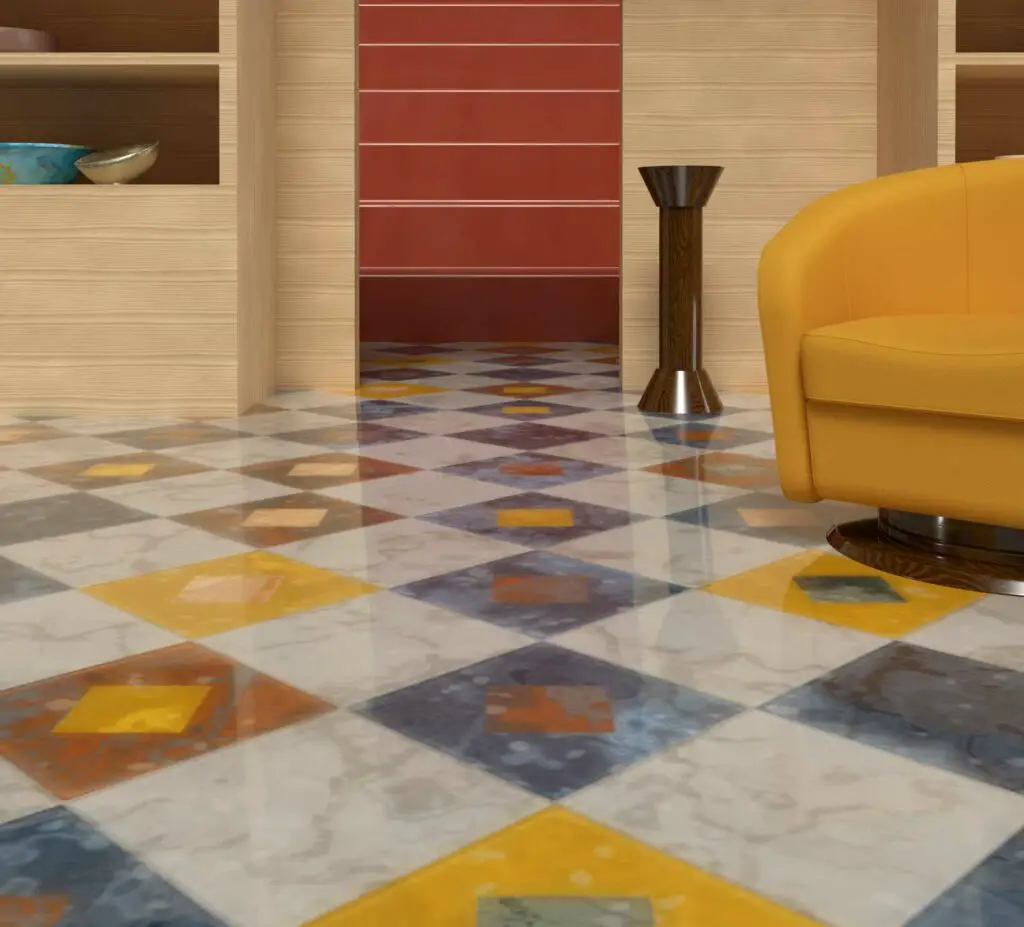Caught between the choice of the ceramic vs. porcelain tile debate? Look no further.
We’re about to break it all down and cover it from top to bottom.
From the composition of the tiles to their performance under heavy use, we’re leaving no stone unturned, quite literally.
Wondering if the higher density of porcelain tile makes it a better choice for your outdoor patio, or if the affordable ceramic tile is your ally for the kitchen floor? Say no more.
We will cover:
What is the main difference between ceramic and porcelain tile? Which one is less likely to crack or chip? Which is better for warmer or colder climates? What are the cost considerations of each?
Every question you have will be answered in detail.
So, for all you DIY enthusiasts and professional builders, get ready.
- The Basics: Porcelain and ceramic tiles, while similar in many ways, have significant differences that can influence your decision in choosing between them.
- Appearance and Style: Both tiles offer a variety of colors and styles. Porcelain, however, tends to have a more natural stone look, while ceramic is available in a wide range of solid and varying colors.
- Durability and Performance: Porcelain tiles are generally more durable and better suited for high-traffic areas due to their low water absorption rate and higher density. Ceramic tiles, while less durable, can still be a good choice for areas with lower foot traffic.
- Water Absorption and Resistance: Porcelain outperforms ceramic in water resistance, making it a popular choice for bathrooms, kitchens, and outdoor use.
- Installation and Maintenance: Both tiles have their installation quirks – porcelain requires more professional skills, while ceramic can be easier for DIY projects. Regular cleaning needs are relatively similar for both.
- Cost Considerations: While porcelain tiles tend to be more expensive per square foot, the final cost can depend on the complexity of the installation and the particular style chosen.
- Best Tile For Different Areas in the Home: The suitability of each tile type varies depending on the area of the home, the level of foot traffic, and the environmental conditions.
- Deciding Between Ceramic and Porcelain: Many factors, including budget, design, and functionality, will influence the better choice between ceramic and porcelain for your specific project.
 Unearthing the Truth: Ceramic vs Porcelain Tiles
Unearthing the Truth: Ceramic vs Porcelain Tiles
Ever stood in a tile store, perplexed by the ceramic and porcelain tile options? You’re not alone.
Time to delve into the nuances of these two stalwarts of the tile world and help you make an informed decision.
Ceramic Tiles: A Proven Performer
Ceramic tiles.
Ubiquitous in homes worldwide, but what are they exactly? Crafted from a straightforward mixture of clay, ceramic tiles undergo kiln-firing at lower temperatures.
The result? A versatile, reliable tile that’s up to tackling a variety of home improvement projects.
Like a sturdy workhorse, ceramic is the reliable backbone of many a tiled surface.
Porcelain Tiles: Refined and Robust
Enter porcelain, ceramic’s more refined counterpart.
Much like ceramic, porcelain tiles originate from a mixture of clay.
The difference? This mixture includes more refined, porcelain clays.
The tiles are then fired at a higher temperature, akin to a potter’s furnace.
This creates a denser, more durable tile, perfectly suited to withstand even the highest foot traffic areas in your abode.
The Making of a Tile: It’s All in the Process
The manufacturing process of these tiles, while similar, has a few key distinctions.
Ceramic and porcelain tiles both start from clay, but it’s in the firing process that the paths diverge.
Ceramic’s lower temperature firing yields a softer, more porous tile, while porcelain’s higher temperature results in a denser, harder end product.
It’s akin to baking a fluffy loaf of bread versus a hearty, dense rye.
Decoding the Differences: Ceramic and Porcelain
Now, let’s tackle the main differences between these two.
Firstly, durability.
Porcelain, with its higher temperature firing process, creates a denser tile, akin to a seasoned adventurer, robust, resilient, and ready for whatever comes its way.
On the other hand, ceramic tiles, akin to a sturdy sedan, offer reliable performance, especially in areas with low to medium foot traffic.
Secondly, water resistance.
Thanks to its denser structure, porcelain tiles have a lower water absorption rate, making them an ideal choice for moisture-prone environments like bathrooms, kitchens, and outdoor settings.
Ceramic, while it is still a water-resistant option, doesn’t quite match the almost impervious nature of porcelain.
Then there’s cost and installation.
Here’s where ceramic regains ground.
Easier on the pocketbook and simpler to install, ceramic offers a practical choice for many homeowners.
The major difference between ceramic and porcelain tiles?
It ultimately boils down to balancing durability, water resistance, and cost.
Remember, each project is unique, demanding a specific set of attributes.
It’s about choosing the right tile for your specific needs.
Whether you go with ceramic or porcelain, both types of tiles bring their unique strengths to the table.
Like a well-coordinated team, it’s about deploying the right player for the job.
Here’s to making a well-informed choice and achieving that perfect finish for your project.
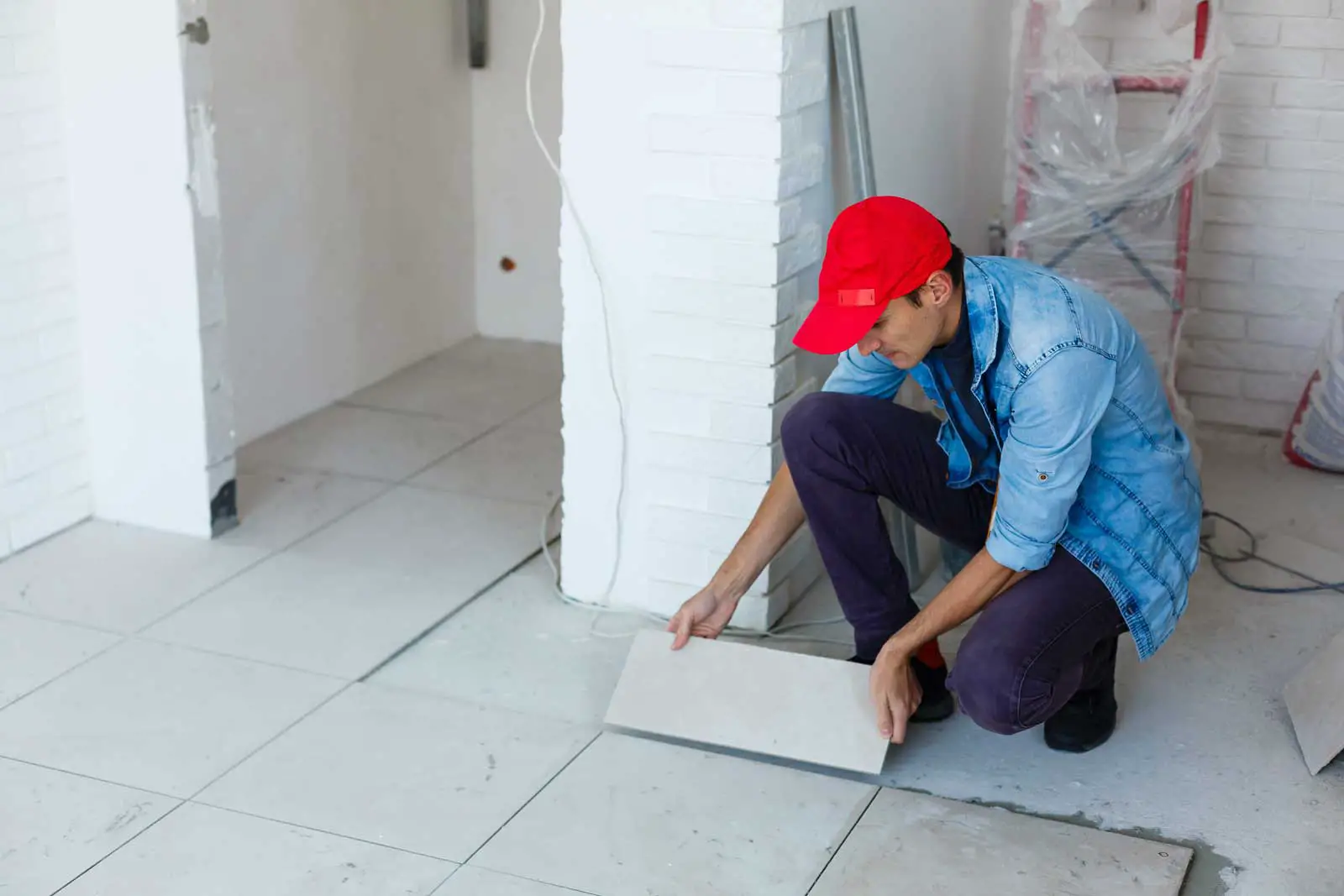 The Art of Aesthetics: Ceramic vs Porcelain Showdown
The Art of Aesthetics: Ceramic vs Porcelain Showdown
Let’s dive into the aesthetical nuances of these two tile types – because, let’s face it, looks matter.
Color and Variety: A Tile’s Best Friend
At the heart of any design decision lies the quintessential query – “What color should it be?” The different colors offered by ceramic and porcelain tiles can undoubtedly sway your decision.
Ceramic tiles are known for their color diversity.
These chameleons of the tile world can emulate the vibrancy of a solid color, morph into a variety of colors, or even mimic the soothing shades of the ocean at dusk.
With a color palette as diverse as nature itself, ceramic tiles open up a world of possibilities, allowing you to flex your design muscles.
Talk about going Picasso on your floor!
On the flip side, porcelain tiles offer a more sophisticated palette.
Due to their through-body composition (that’s industry jargon for color that runs through the tile, not just on the surface), porcelain tiles offer a uniform color throughout.
What’s more, they flawlessly imitate natural materials such as wood or stone.
Porcelain is the master of mimicry, capable of delivering a highly realistic representation of the material it’s emulating.
Consider it the Daniel Day-Lewis of the tile world.
Grains and Textures: It’s More Than Skin Deep
Let’s cut to the chase – you’re considering tiles that mimic the look of wood grains.
Who wouldn’t? It brings that warm, natural look indoors.
But which tile does it better?
Ceramic tiles can deliver a commendable imitation, but they often fall short when compared to the realistic texture and depth of porcelain tiles.
Porcelain’s manufacturing process allows it to replicate the intricate details of wood grains, right down to the knot and split details.
It’s like having a woodland inside, without the woodland creatures.
Style and Aesthetics: The Ultimate Decider
Now, let’s address the all-important question – which tile takes the crown for style and aesthetics?
The best way to answer this involves another question – What’s the style of your home? For a traditional, rustic, or eclectic style, ceramic tiles could be your go-to.
Their wide array of colors and designs lends a charm that is hard to resist.
They’re like your favorite classic rock song – timeless and always hits the right note.
However, for modern, minimalist, or upscale aesthetics, porcelain might be your popular choice.
Its ability to convincingly mimic high-end materials like marble or exotic woods can add a touch of sophistication to any space.
It’s like adding a tuxedo touch to your floors.
Remember, your home is an extension of your personality.
It’s your canvas.
Both ceramic and porcelain tiles offer you the tools to create your masterpiece.
Whether you need the vibrant color palette of ceramic tiles or the sophisticated mimicry of porcelain tiles, choose the one that resonates with your style and preference.
Picking tiles is a lot like matchmaking.
It’s not just about the looks or durability.
It’s about finding the one that fits seamlessly into your life and home, adding value every day.
Because at the end of the day, isn’t that what home improvement is all about?
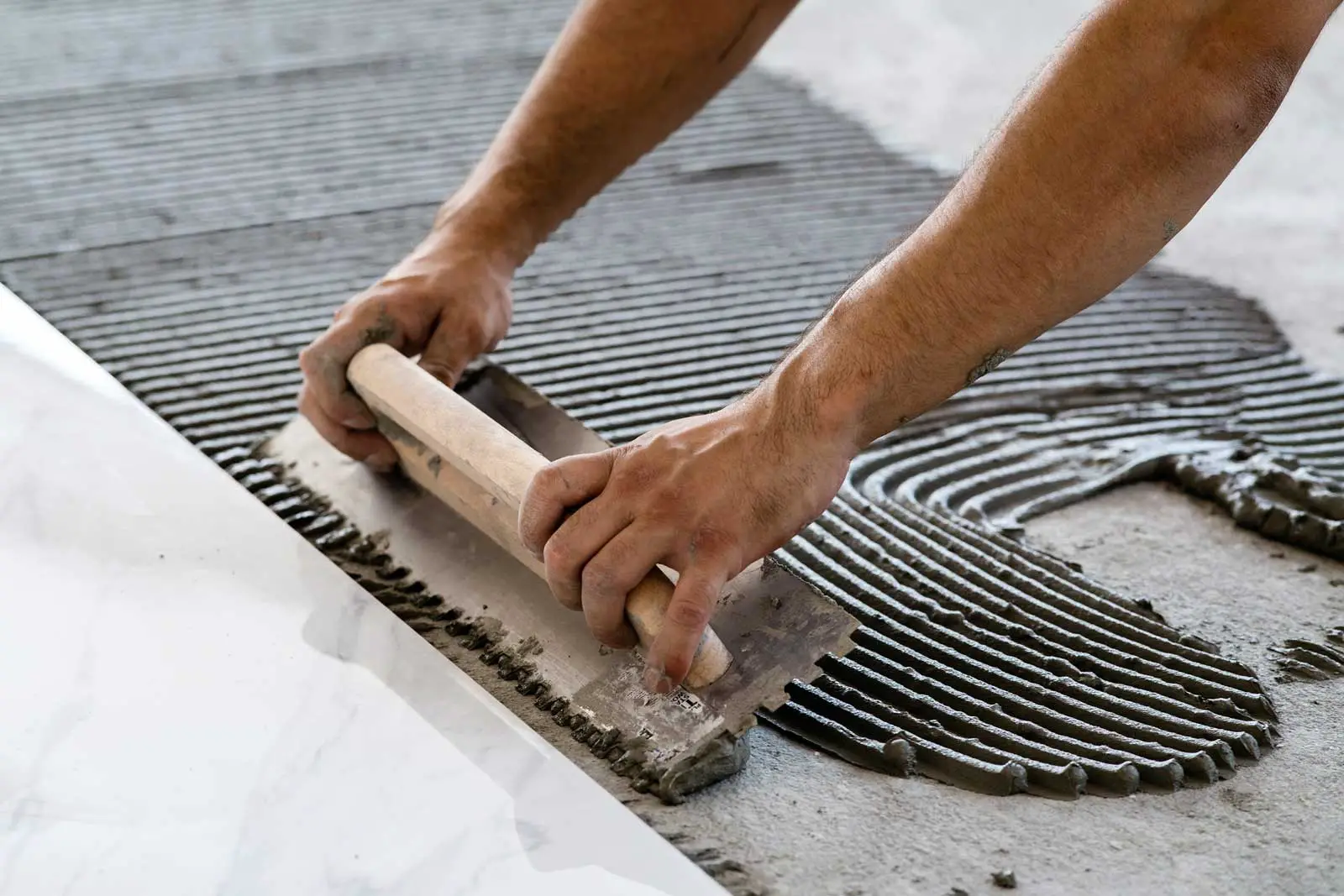 The Test of Time: Ceramic vs Porcelain Durability Duel
The Test of Time: Ceramic vs Porcelain Durability Duel
Choosing between ceramic and porcelain isn’t just an art; it’s a science.
While you may have nailed down the aesthetic appeal, now it’s time to think about durability and performance.
After all, what good is a stunning floor if it can’t handle your Saturday Night Fever dance-offs, right?
A Clash of Titans: Durability Comparison
When it comes to the marathon of durability, there’s no skirting around it – porcelain takes the cake.
Ceramic tiles are sturdy, no doubt, but porcelain has the upper hand, all thanks to its intense manufacturing process.
It’s like comparing an amateur boxer with a heavyweight champion.
Both are fighters, but one is just a tad bit more durable.
Don’t get me wrong.
Ceramic tiles are no pushovers.
But porcelain tiles are just…
tougher.
They are denser and less porous, meaning they are less likely to crack under pressure.
They are essentially ceramic tiles that have been to the gym – harder, stronger, and more durable.
The PEI Rating: The Ceramic and Porcelain Litmus Test
So how can you be sure about a tile’s durability? The answer lies in the PEI rating.
Think of it as the SAT score for tiles.
It stands for Porcelain Enamel Institute rating, and it measures a tile’s ability to stand up to wear and tear.
In layman’s terms, the higher the PEI rating, the more durable the tile.
So if you’re looking for a tile that can withstand a high-heel-induced assault, you want one with a high PEI rating.
When it comes to PEI, ceramic typically falls into the 3-4 range, while porcelain commonly rates at a robust 5.
It’s like comparing a marathon runner (porcelain) to a sprinter (ceramic) – both impressive, but one goes the distance.
Heavy Traffic Areas: Who Takes the Lead?
Speaking of going the distance, let’s talk about high foot traffic areas.
You know, those parts of your house that see more action than a Hollywood blockbuster.
Hallways, kitchen, entryway – which tile is up to the challenge?
Given its higher durability and PEI rating, porcelain is often the preferred choice for high-traffic areas.
It’s more resistant to wear and less likely to reveal wear patterns over time.
Think of it as the bouncer at your favorite club – able to handle the heavy foot traffic and still look good doing it.
Cracks and Chips: The Achilles Heel?
Now to address the elephant in the room: “Do ceramic tiles crack easily?” and “Do porcelain tiles chip easily?”
Well, like anything in life, tiles aren’t perfect.
Ceramic tiles, due to their lower density, can be more susceptible to cracks, especially if they’re not installed correctly.
It’s like dropping your smartphone without a case – not a pretty sight.
On the other hand, porcelain tiles, while they’re less likely to crack, can chip.
Yes, even Superman has his kryptonite.
However, remember that porcelain is through-color, so a chip might not be as noticeable as on a ceramic tile.
It’s like scratching a black car versus a candy-apple red one – one’s just less noticeable.
So there you have it.
In the boxing ring of durability, porcelain generally lands the knockout punch.
But remember, like in any good boxing match, the outcome depends on the competitors’ preparation and training.
Make sure your tiles are correctly installed and cared for, and they’ll go the distance with you.
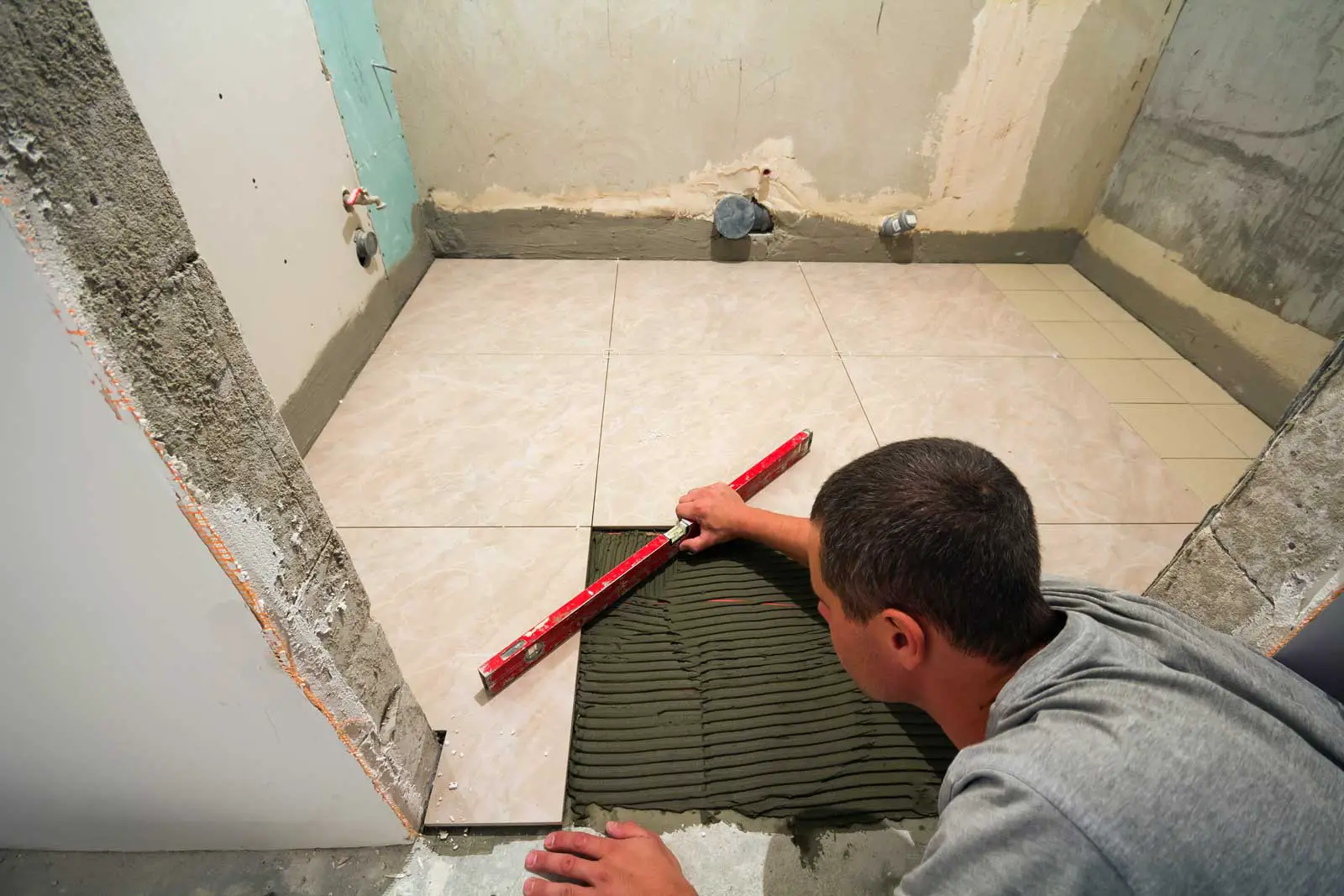 Sink or Swim: Ceramic vs Porcelain in the Water Wars
Sink or Swim: Ceramic vs Porcelain in the Water Wars
Making a splash in your home design involves more than just looks and durability.
You also need to consider how well your chosen tile stands up against its arch-nemesis – water.
Let’s dive in and see how ceramic and porcelain tiles fare when they’re in deep water.
Absorbing the Facts: Water Absorption Rates
Understanding water absorption rates is vital.
Just like a sponge, tiles can suck up water, which can affect their longevity and looks.
It’s a simple equation: The higher the water absorption rate, the more susceptible the tile is to water damage.
You wouldn’t want your beautiful floor to end up looking like a watercolor painting gone wrong, right?
So here’s the lowdown: Ceramic tiles, despite their charm, have a higher water absorption rate.
They can take in around 3-7% of water, which is comparable to that one friend who just can’t say no to a second round of drinks.
Porcelain tiles, on the other hand, are more like the designated driver.
Their water absorption rate is less than 0.5%, making them almost entirely waterproof.
They’re like a duck – water just rolls right off them.
Resisting the Tide: Which Tile is More Water Resistant?
We’ve established that porcelain tiles are the heavyweight champions in the water-absorbing department.
So, it stands to reason that when it comes to water resistance, porcelain punches way above its weight class, while ceramic takes a back seat.
Think of porcelain as the MMA fighter who’s trained in water resistance.
Its dense nature and low water absorption rate make it hard for water to penetrate, helping it resist staining and water damage.
Ceramic, on the other hand, while not a complete pushover, is more susceptible to the effects of water over time.
Navigating the Rapids: Suitability in Wet Areas
So now you’re probably wondering: “Where should I use these tiles?” Well, this is where it gets interesting.
Both ceramic and porcelain tiles can be used in wet areas, but with a little strategic planning, you can maximize their benefits.
Ceramic tiles, with their higher water absorption rate, are great for areas like living rooms and bedrooms.
They can even be used in kitchens and bathrooms, but you might want to think twice about using them in high-moisture areas.
Porcelain, with its excellent water resistance, is a no-brainer for moisture-prone areas like bathrooms, kitchens, and even outdoors.
It’s like wearing a waterproof watch – you don’t have to worry about it getting wet.
Just remember to seal those grout lines! Porcelain might be water-resistant, but grout isn’t.
You wouldn’t want your porcelain fortress to be breached by unsealed grout, would you?
So there you have it.
Porcelain takes the crown in the water wars, making it a prime choice for wet areas.
But don’t count ceramic out just yet! With proper installation and sealing, ceramic can hold its own against water too.
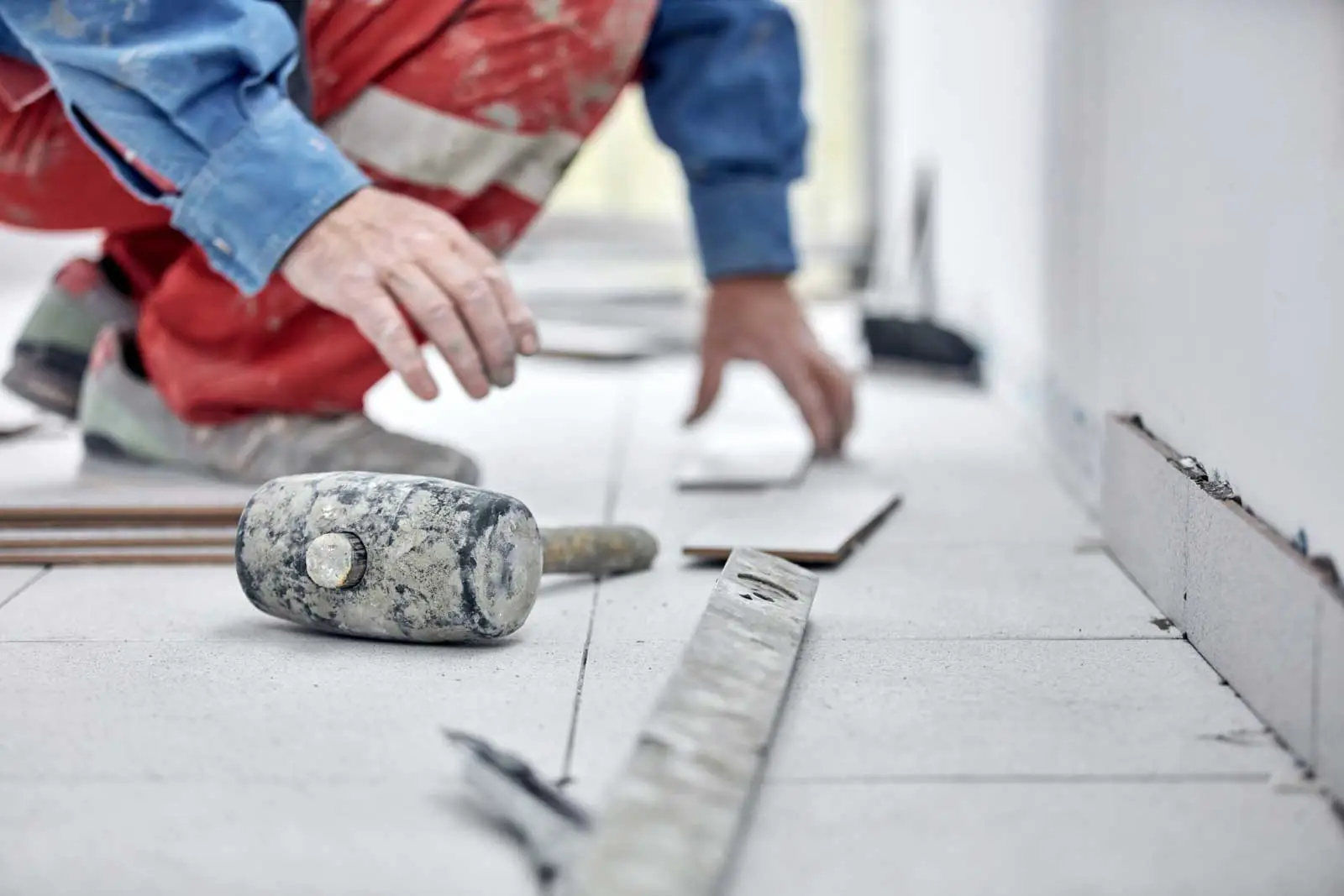 Laying It Down: Installation and Maintenance of Ceramic and Porcelain Tiles
Laying It Down: Installation and Maintenance of Ceramic and Porcelain Tiles
Let’s shift gears and talk about laying down those tiles.
Yeah, the style, durability, and water resistance are important, but you also need to consider what it takes to install and maintain these tile titans.
Put on your work boots, because it’s time to get your hands dirty.
Piecing It Together: The Installation Process
Installing tiles is like completing a puzzle, but instead of a beautiful picture, you get a beautiful floor.
The process, while meticulous, is doable if you’ve got the right tools, time, and patience.
But here’s the question – between ceramic and porcelain, which is easier to install?
Ceramic tiles are the friendlier option.
They’re easier to cut, so a simple tile cutter usually does the trick.
It’s like cutting through a hot cake – simple, swift, and satisfying.
On the other hand, porcelain is the tougher cookie.
It’s denser and harder to cut, making it a job for the more robust wet tile saw.
If ceramic tiles were cake, porcelain would be more like a well-done steak.
Doable, but definitely takes more effort.
If you’re a DIY enthusiast, you might lean towards ceramic for its ease of installation.
But if precision and perfection are your thing, you might consider professional installation, especially for porcelain.
Shine On: The Regular Cleaning Needs
Maintenance is like a gym routine for your tiles.
It keeps them looking good and performing at their best.
So, what do ceramic and porcelain tiles need to keep them looking spick and span?
Regular cleaning for both is pretty straightforward – a little bit of sweeping and mopping, and you’re good to go.
No need for fancy cleaning agents, a mild detergent and warm water usually get the job done.
Ceramic tiles, with their higher water absorption, might require a bit more attention.
You’ll want to wipe up spills quickly to avoid staining.
Porcelain, on the other hand, is a little more forgiving when it comes to minor spills and stains.
Tools of the Trade: Special Tools or Skills Required
Like a knight going into battle, you need the right weapons for tile installation.
For ceramic tiles, a simple tile cutter will be your sword.
But for porcelain, you’ll need a stronger weapon, like a wet tile saw.
Alongside these tools, having a keen eye for detail and a healthy dose of patience wouldn’t hurt.
But hey, if manual labor isn’t your thing, you can always call in the professionals.
They’ve got the tools, skills, and time to get the job done right.
With the right approach and a bit of care, both ceramic and porcelain tiles can be a fantastic addition to your home.
It all comes down to what you’re willing to put into it – after all, great results require great effort.
Tile Economics 101: Cost Considerations for Ceramic and Porcelain Tiles
Next up on the tile discussion board is cost – the one thing that can make or break your decision.
You might be visualizing your dream kitchen floor, but your wallet may have something else to say about it.
So let’s get down to the brass tacks and talk numbers.
The Price Tag: Cost Differences Per Square Foot
When it comes to home improvement, every square foot counts, and when it comes to tiles, cost per square foot is a critical consideration.
Ceramic tiles are typically the more budget-friendly option.
They’re like the reliable, yet affordable, pick-up truck in the tile world – get the job done without breaking the bank.
Porcelain tiles, on the other hand, come with a higher price tag.
The Mercedes of tiles, if you will.
They bring in the style, performance, and durability, but all that comes at a cost.
But remember, the upfront cost of the tiles is only part of the picture.
You also need to consider…
The Installation Equation: Figuring In the Costs
Here’s the thing: installation costs can be the silent budget buster in your tile project.
As we discussed earlier, ceramic tiles are easier to cut and install, which often translates into lower installation costs.
Porcelain, with its hardier nature, requires specialized cutting tools and more time for installation.
This extra effort usually equates to higher installation costs.
So, if you’re considering porcelain, be sure to factor this in.
Addressing the Million-Dollar Question
Now, to address the question you’re probably asking: “Is ceramic more expensive than porcelain?”
Well, it’s like comparing apples and oranges – or should I say, pick-up trucks and Mercedes.
The upfront cost of ceramic tiles is generally lower, and the installation can be less expensive, too.
Porcelain, on the other hand, usually commands a higher price per square foot and can bring with it higher installation costs.
But with its superior durability and water resistance, many homeowners find the additional expense well worth it.
At the end of the day, it’s all about striking the right balance between cost, quality, and style.
And remember, good things rarely come cheap – not even in the world of tiles.
But before you let the cost concerns turn you off, let’s add one more important consideration to the mix.
Just because porcelain tiles are generally more expensive, it doesn’t mean they can’t be a wise investment.
It’s all about the longevity and added value they bring to your home.
So, weigh up your options, consider your budget, and make the choice that suits your needs best.
The Tile Matchmaker: Finding the Perfect Tile for Every Home Area
So, you’ve got the scoop on tile types, but where does each one shine? Picture this: You’re on a tile dating show, and you need to find the perfect match for every room in your house.
Let’s help you sweep the right tile off its feet for each part of your home.
Home Sweet Home: The Perfect Tile for Every Room
Let’s start with the bathroom.
Ceramic tiles are a popular choice due to their water resistance and lower cost.
They’re like your trusted rubber ducky, reliable and easy to clean.
On to the kitchen.
With spills and splashes being a common affair, you’ll want a tile that can handle a bit of mess.
Enter porcelain.
Its low water absorption rate makes it an excellent contender for the culinary battleground that is your kitchen.
Laundry rooms, another water-intensive area, also benefit from porcelain’s water-wicking properties.
It’s like having a raincoat for your floors – who wouldn’t want that?
And let’s not forget outdoor patios.
Porcelain’s hardy nature and higher resistance to wear and tear make it a great fit for outdoor settings.
It’s like having an all-weather friend who sticks around, rain or shine.
The Commercial Superhero: Tiles for Heavy Traffic and Exterior Use
Now let’s move on to commercial settings, where the foot traffic is akin to a bustling city intersection.
This calls for a tile that can take a beating and still look good – and that’s porcelain for you.
Resistant to heavy traffic and harsh weather, it’s like a superhero in the world of tiles.
If you’re planning exterior use, such as outdoor walkways or patios, the toughness and moisture resistance of porcelain make it a stellar choice.
It’s like the rugged 4×4 of tiles, designed to handle the rough and tumble of the outdoors.
The Climate Champion: Is One Better for Warmer or Colder Climates?
The weather outside is frightful, but your tiles are so delightful…or are they? The performance of your tiles can indeed be impacted by climate conditions.
In colder climates, porcelain’s low water absorption rate means it’s less likely to crack under frost conditions.
It’s like the tile version of a penguin, perfectly adapted to colder conditions.
Warmer climates? Both ceramic and porcelain can handle the heat, but remember, the color of your tile can affect how much heat it absorbs.
So choose wisely!
The bottom line is this: When it comes to choosing the right tile for different areas in your home, it’s all about the right tile for the right place.
Match them up like you’d pair a fine wine with a gourmet meal, and you’ll end up with a home that’s as functional as it is stylish.
And hey, whether you’re team ceramic or team porcelain, remember this: The best tile is the one that makes your house feel like home.
Tile Face-Off: Navigating the Ceramic vs Porcelain Decision Maze
Navigating the tile universe can feel like being in a maze.
There are choices at every corner, with ceramic and porcelain tiles at the forefront.
But don’t fret, we’re going to guide you through the decision-making process, ensuring you land the perfect tile for your needs.
Understanding Your Needs: The Factors to Consider
Before we delve into the ceramic vs porcelain conundrum, it’s essential to understand the factors that should guide your decision.
Think of these as your GPS coordinates in the tile selection maze.
The first step is to identify the purpose and location of the tiles.
Remember, the kitchen might adore porcelain tiles, but your wallet could favor ceramics for the less-trafficked bathroom.
It’s all about location, location, location.
Durability is also a crucial factor.
Does your home buzz with activity, or is it a serene sanctuary? Porcelain, with its superhero-like endurance, could be ideal for busy households.
For a quieter abode, ceramic might be your perfect partner.
Don’t forget to consider maintenance and installation.
Are you a hands-on DIY enthusiast, or do you prefer leaving it to the pros? While ceramic tiles are more manageable for DIY installations, porcelain’s density might call for professional help.
Lastly, your budget plays a significant role.
With porcelain typically costing more than ceramic, you’ll need to balance your dream tiles with your wallet’s reality.
But hey, who said high quality always comes at a higher price?
Answering Your Questions: Ceramic vs Porcelain
So, let’s get down to it: Which is better, porcelain or ceramic tile?
Well, the answer depends on your individual needs.
If durability and moisture resistance top your list, porcelain could be your champion.
But if you’re looking for cost-effectiveness and easier installation, ceramic might be your winner.
Now, onto flooring.
For high-traffic areas, porcelain’s durability makes it a hardy contender.
But for less bustling spaces, ceramic can provide beauty and durability without breaking the bank.
Wondering whether porcelain is better than ceramic in the bathroom? Given its lower water absorption rate, porcelain might have the edge here.
But if you’re on a budget, ceramic can still be a trusty choice.
And what lasts longer, porcelain or ceramic? Generally, porcelain’s denser composition gives it a longevity advantage.
But with proper care and maintenance, ceramic tiles can also have a good innings.
Making the right choice between ceramic and porcelain tiles is like finding your way out of a maze.
But by understanding your needs and the qualities of each tile, you can navigate the twists and turns with confidence.
After all, whether you choose porcelain or ceramic, you’re headed towards a home that’s as stylish as it is functional.
Related & Frequently Asked Questions
Still have questions? I’ve got answers.
Q: What are the disadvantages of porcelain tile?
A: Porcelain tiles, while renowned for their durability and water resistance, do come with some disadvantages.
They’re generally more expensive than their ceramic counterparts.
Plus, due to their higher density, they can be more challenging to cut and install, often requiring professional installation.
Their hardness can also make them more uncomfortable underfoot than softer flooring options.
Q: Is porcelain tile waterproof?
A: Yes, porcelain tiles are highly water-resistant due to their low water absorption rate, making them nearly waterproof.
This quality, certified by the Tile Council of North America and the Porcelain Tile Certification Agency, makes them an excellent choice for bathrooms, kitchens, and outdoor applications.
Q: What are the 3 types of tiles?
A: The three main types of tiles you’ll encounter at tile stores are ceramic, porcelain, and natural stone.
Ceramic tiles, made from ceramic clays and fired at lower temperatures, are versatile and budget-friendly.
Porcelain tiles, a subtype of ceramic, are made from refined clay and fired at very high temperatures, resulting in a denser, more durable tile.
Natural stone tiles, such as granite, marble, or slate, offer a unique, high-end look but often require more maintenance.
Q: Do ceramic tiles crack easily?
A: Ceramic tiles are less durable than porcelain tiles, but that doesn’t mean they crack easily.
When properly installed and maintained, ceramic tiles can withstand regular use.
However, they may not be the best option for heavy use or high-traffic areas.
Always check the PEI (Porcelain Enamel Institute) rating to ensure the tile is suitable for its intended use.
Q: Is ceramic more expensive than porcelain?
A: Typically, ceramic tiles are less expensive than porcelain tiles.
This difference in price can be attributed to the higher kiln temperatures and more refined clay used in the making of porcelain tiles.
However, prices can vary depending on other factors such as design, size, and brand.
Q: Which tile brand is best?
A: The “best” tile brand can depend on your specific needs and preferences, including design, budget, and usage requirements.
Some well-known and respected tile manufacturers include Daltile, Marazzi, and Emser.
Always check product reviews and consult with industry groups or professionals for specific recommendations.
Q: Which floor tile is most durable?
A: When it comes to durability, porcelain floor tiles often come out on top.
Their high density and low water absorption rate make them highly durable and resistant to wear and tear, even in high traffic areas or commercial use.
Q: Do porcelain tiles chip easily?
A: Due to their high density and durability, porcelain tiles are less likely to chip than ceramic tiles.
However, despite their robust nature, they can still chip if a heavy object falls on them.
It’s always a good idea to keep a few extra tiles in case replacements are needed.
Q: Which tiles are best quality?
A: The “best quality” tiles can vary based on your specific needs.
Porcelain tiles are known for their durability, water resistance, and wide range of design options, making them a high-quality choice for various applications.
Natural stone tiles offer a unique, luxurious look, while high-quality ceramic tiles can provide durability and aesthetic appeal at a lower cost.
Q: Which floor tiles are long-lasting?
A: Porcelain tiles are known for their longevity, thanks to their dense body and high resistance to wear and tear.
With proper care, porcelain floor tiles can last for decades.
Ceramic tiles can also be long-lasting, particularly when used in areas with lower foot traffic.
